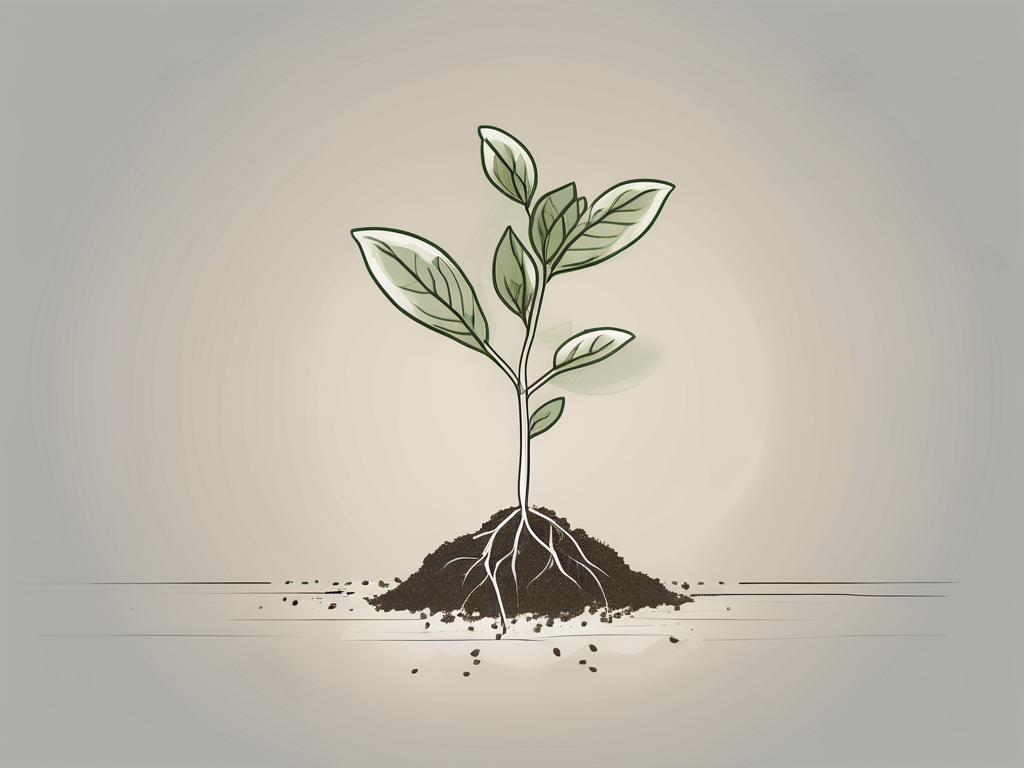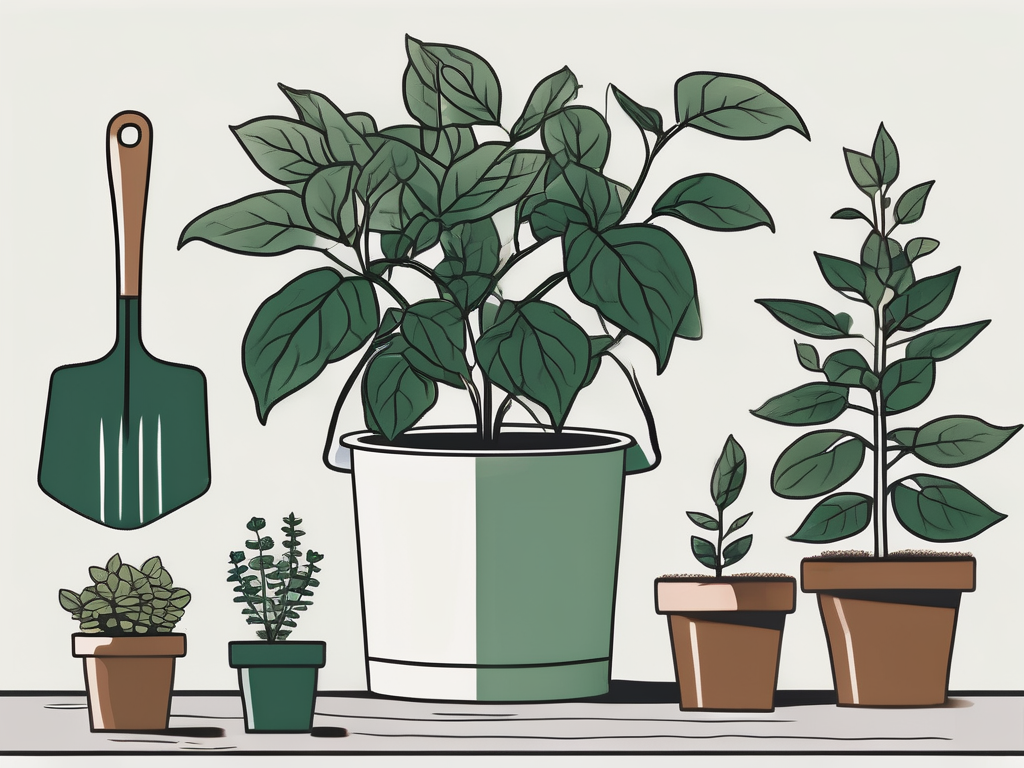
Are you looking to expand your spider plant collection or share the joy of growing these beautiful green wonders with friends and family? Well, look no further! In this step-by-step guide, we will explore the fascinating world of spider plant propagation in water. From understanding the science behind it to learning the necessary tools and materials, preparing your spider plant, the actual propagation process, and transitioning your newly propagated plant to soil - we've got you covered!
Understanding Spider Plant Propagation
Before we dive into the exciting world of water propagation, let's take a moment to understand the process behind it. Propagation is the art of creating new plants from existing ones. When it comes to spider plants, this can be easily achieved through the use of water. By placing spider plant cuttings or baby spider plantlets in water, we can encourage the growth of new roots, leading to the development of independent plants.
But why choose water propagation? Let's explore the benefits!
The Science Behind Plant Propagation
Plant propagation relies on the amazing ability of plants to regenerate and reproduce. Every plant cell has the potential to develop into a whole new plant. This natural ability is driven by specialized cells called meristems, which are responsible for growth and regeneration. Meristems are found in the tips of stems and roots, and they contain undifferentiated cells that can differentiate into various plant tissues.
When a spider plant cutting or baby spider plantlet is placed in water, these undifferentiated cells are stimulated to develop into new roots. The water provides the necessary hydration and nutrients for the cells to grow and differentiate. As the roots develop, they anchor the plant and absorb water and nutrients from the environment, allowing the plant to become independent.
It's fascinating to think that a small piece of a spider plant has the potential to grow into a whole new plant, with its own leaves, stems, and roots. This process showcases the remarkable resilience and adaptability of plants.
Why Choose Water Propagation?
Water propagation is a popular and accessible method that offers several advantages. For starters, it requires minimal investment and can be done with items readily available in most households. All you need is a glass or jar filled with water and a spider plant cutting or baby spider plantlet.
One of the main benefits of water propagation is the ability to closely monitor the growth of new roots. As the roots develop, you can observe their progress and witness the transformation from a small cutting or plantlet into a fully rooted plant. This hands-on experience allows you to appreciate the intricacies of plant development and gain a deeper understanding of the growth process.
Another advantage of water propagation is that it eliminates the need for soil. Soil can sometimes harbor diseases and pests that can hinder plant growth. By using water, you reduce the risk of soil-borne issues and create a clean and controlled environment for the development of new roots.
Furthermore, water propagation is an efficient method for expanding your indoor jungle. You can propagate multiple spider plants at once by placing several cuttings or plantlets in separate glasses or jars. This allows you to create a beautiful display of spider plants in a relatively short amount of time.
In conclusion, water propagation is a fascinating and rewarding method for propagating spider plants. It harnesses the natural regenerative abilities of plants and provides an opportunity to witness the growth and development of new roots. Whether you're a seasoned plant enthusiast or a beginner gardener, water propagation is a technique worth exploring to expand your collection of spider plants.
Necessary Tools and Materials for Water Propagation
Now that we understand the why, let's move on to the how. Before you embark on your spider plant propagation journey, it's important to gather the necessary tools and materials.
Spider plant propagation is an exciting and rewarding process that allows you to expand your plant collection and share the beauty of these lush green plants with others. To ensure successful propagation, you'll need a few key tools and materials.
Choosing the Right Container
The first step is to find a suitable container for your water propagation station. This container will serve as the home for your spider plant cuttings or spider plantlets as they develop roots in water. It's important to choose a container that provides the ideal environment for root growth.
When selecting a container, look for one that is wide enough to accommodate multiple cuttings or spider plantlets. This will allow you to propagate several plants at once, maximizing your success rate. Additionally, a transparent container is ideal as it allows you to easily monitor root growth and make any necessary adjustments to the water level or conditions.
Glass jars and glass vases are popular choices for water propagation due to their transparency and aesthetic appeal. If you're looking for a more sustainable option, you can also repurpose old food containers. Just make sure to thoroughly clean the container before use to prevent any potential contamination.
Another important consideration when choosing a container is its depth. The container should be deep enough to hold an inch or two of water, allowing the roots to submerge and develop properly. This depth provides the necessary moisture for root growth without drowning the plant.
Water Quality and Its Importance
Water quality plays a crucial role in the success of your spider plant propagation. The right water can provide the optimal environment for root development, ensuring healthy and robust plants.
When it comes to water quality, there are a few factors to consider. First and foremost, it's important to use clean water that is free from any harmful chemicals or contaminants. Chlorine, commonly found in tap water, can be detrimental to the delicate roots of spider plant cuttings or spider plantlets.
To eliminate chlorine from tap water, you have a couple of options. One method is to let the water sit out for at least 24 hours, allowing the chlorine to naturally dissipate. This is a simple and cost-effective solution that can be easily incorporated into your propagation routine.
If you prefer a more immediate solution, you can opt for distilled or filtered water. Distilled water has been purified through a process that removes impurities, including chlorine. Filtered water, on the other hand, passes through a filtration system that removes contaminants, ensuring a clean and suitable environment for your spider plant propagation.
By using clean, chlorine-free water, you're providing your spider plant cuttings or spider plantlets with the best possible start in their journey towards becoming thriving, mature plants. This attention to detail and consideration for their needs will greatly increase your chances of success.
Preparing Your Spider Plant for Propagation
Now that you have your tools and materials ready, it's time to prepare your spider plant for propagation.
Spider plants, scientifically known as Chlorophytum comosum, are popular houseplants known for their long, arching leaves and ability to thrive in various environments. They are not only aesthetically pleasing but also relatively easy to propagate, making them a favorite among plant enthusiasts.
Identifying Healthy Spider Plant Shoots
When selecting shoots for propagation, it is crucial to choose healthy spider plant shoots that are free from damage or disease. Healthy shoots are more likely to develop into strong, independent plants. Here are some tips to help you identify healthy spider plant shoots:
- Length: Look for shoots that are at least a few inches long. Longer shoots tend to have more stored energy, which aids in the development of roots.
- Leaf Color: Vibrant green leaves indicate a healthy shoot. Avoid shoots with yellowing or browning leaves, as they may be a sign of nutrient deficiencies or other issues.
- Firmness: Gently touch the shoot to assess its firmness. Healthy shoots should feel taut and plump, indicating good hydration and overall vigor.
- No Pests or Diseases: Inspect the shoots carefully for any signs of pests or diseases, such as webbing, spots, or wilting. It's essential to start with clean, pest-free material to ensure successful propagation.
By selecting healthy spider plant shoots, you are setting the stage for successful propagation and the growth of new, thriving plants. Once you have identified the ideal shoots, it's time to move on to the next steps of the propagation process.












